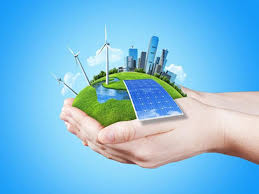Industrial Ecology. Raw material use efficiency
General objective
Development and implementation of thermodynamic tools to assess the degradation of the planet's natural resources and optimize their use in the industrial sector.
Research lines
Research Line 1. Quantification of the thermodynamic criticality of raw materials on the planet and optimisation of their use in industrial processes and products.
- Activity 1.1 Models of raw material extraction and demand. Establishment of strategies for sufficiency, eco-design and recyclability of technological equipment.
- Activity 1.2 Thermo-economic evaluation and optimisation of industrial processes for extracting and recovering raw materials. Life cycle analysis of processes and products.
- Activity 1.3 Identify and facilitate opportunities for industrial symbiosis between industries.
Research Line 2. Assessment of the sustainability of agronomic processes and their impact on soil fertility.
- Activity 2.1 Circularity and soil impact studies of agronomic products.
- Activity 2.2 Thermo-economic evaluation of agricultural processes including soil regeneration costs.
Projects developed
AWARE: Critical Raw Material Recycling
TREASURE: leading the TRansit ion of the European Automotive SUpply chain towards a circulaR futurE
Demonstration Of Local industrial-urban symbiosis initiatives (REDOL) project
Technological Offer/Services
At the industrial/business level
Assist the industry in minimizing the use of raw materials, increasing their efficiency, and aiming to close the material cycles. Specifically:
- Simulation of extractive, metallurgical, and chemical processes.
- Search for industrial symbiosis solutions.
- Material Flow Analysis (MFA) of processes to determine resource efficiency in industries and companies.
- Thermoeconomic diagnosis of plants producing primary and secondary raw materials: chemicals, metals, industrial minerals, and recycling.
- Impact assessment associated with the use of certain raw materials at the plant and industrial systems level.
- Development of indicators to determine the efficiency of companies and plants in the use of raw materials.
Policy level
Provide solid and verified information for the formulation of political, economic, industrial, and social strategies related to "circular economy, sufficiency, and regeneration" in response to the new challenges associated with raw material scarcity due to the ecological transition. Establishment of guidelines, indicators, and pertinent information at the national, European, and international levels to improve the management of raw material use. Specifically:
- Development of indicators to define methodologies and accounting systems, increase transparency, and ultimately protect mineral capital.
- Analysis of material flows at local, regional, national, or international scales to identify "critical raw materials."
- Impact assessment associated with the extraction, use, recycling, or substitution of certain raw materials on a global scale.

